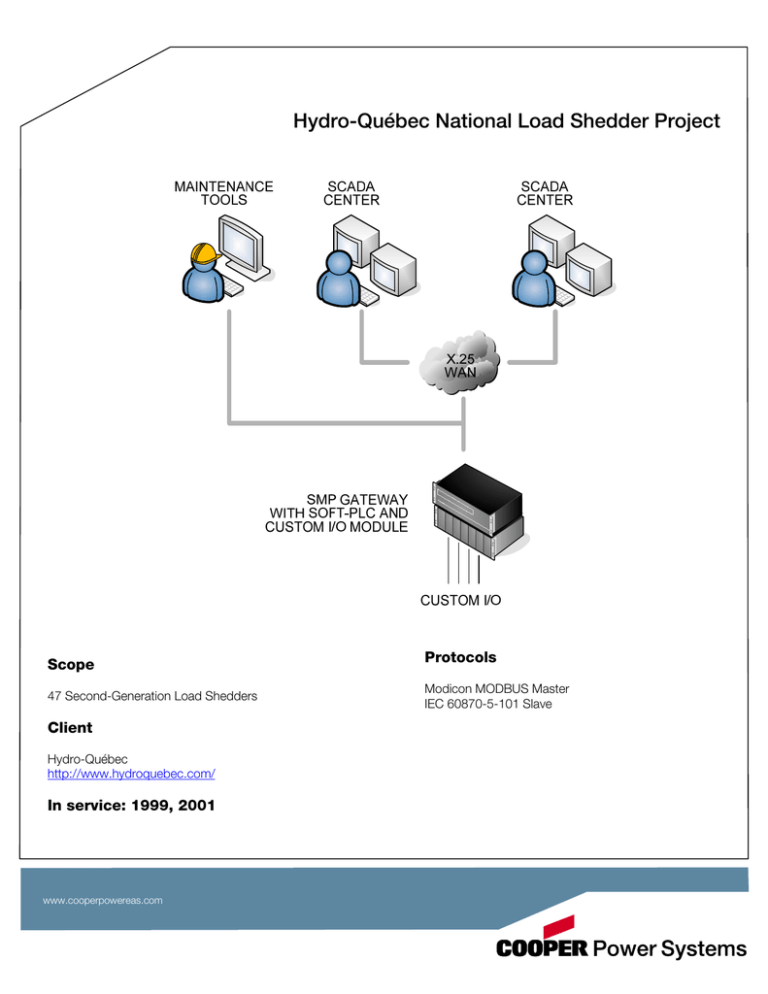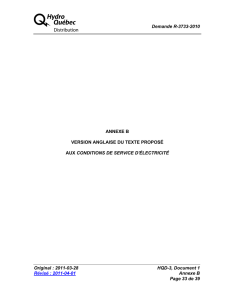
Hydro-Québec National Load Shedder Project
Scope
47 Second-Generation Load Shedders
Client
Hydro-Québec
http://www.hydroquebec.com/
In service: 1999, 2001
www.cooperpowereas.com
Protocols
Modicon MODBUS Master
IEC 60870-5-101 Slave
The Solution
The Challenge
Created in 1944 by the Québec government, its only
shareholder, Hydro-Québec supplies electricity to nearly
4 million customers across the province of Québec. The
company also does business with dozens of power
companies in northeastern North America, and
participates in energy-related infrastructure projects on
several continents.
With assets of over $66 billion, annual sales of
$12.7 billion and a work force of 19,297 people,
Hydro-Québec ranks among the leaders of the North
American energy industry.
As part of its ongoing Transmission Network Reliability
program, Hydro-Québec required a mean to remotely
control the load on its electricity transport network.
Quebec City
730 Commerciale Street, Suite 200
Saint-Jean-Chrysostome, Quebec
Canada G6Z 2C5
Technical Support:
P: +1.418.834.0009
support@cybectec.com
Montreal
1290 St. Denis Street, Suite 300
Montreal, Quebec
Canada H2X 3J7
Sales:
P: +1.514.845.6195
sales@cybectec.com
All Cooper logos and Cooper Power Systems are trademarks of Cooper US, Inc., in the U.S. and other countries.
You are not permitted to use Cooper trademarks without the prior written consent of Cooper US, Inc.
©2009 Cooper US, Inc. All Rights Reserved
B1100-09028 • May 2009 • New Issue
To meet Hydro-Québec’s requirements, Cooper Power
Systems developed and installed 47 remote control
load shedders. The devices automatically maintain the
balance between the production and the load on
Hydro-Québec's electricity transport network. They also
enable the operators to alter the load on the network
based on operating needs.
To develop the load shedders, the custom software
and consulting group used standard Substation
Modernization PlatformTM (SMP) technology with
custom I/O interfaces. All control functions were
implemented using the SMP Gateways' Soft PLC
module.












